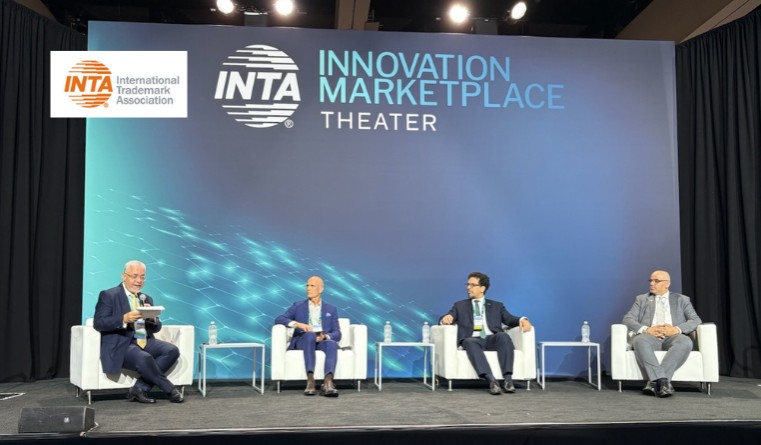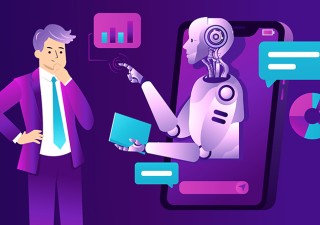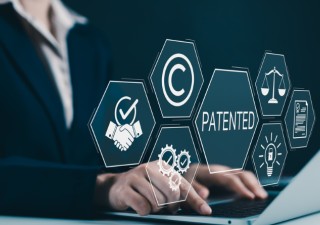INTA 2025: IP offices embrace AI
20 May 2025

There’s no question that lawyers are embracing the use of artificial intelligence in their daily practice, but so are IP offices, says Abdulrahman Hassan Al Muaini, assistant undersecretary for the IP rights sector at the United Arab Emirates’ Ministry of Economy in Abu Dhabi.
Al Muaini, speaking at a session called “The Future of IP: Use of AI by IP Offices” at the International Trademark Association’s 2025 Annual Meeting in San Diego, likened the increase in the adoption of AI to increased use of technology generally. In the 1990s, when trademark applications were still all completed on paper, the UAE had more than six different trademark offices across the UAE. “It allowed a customer to go there and submit their trademark application. And then, the government let us know that government entities had to shift to become fully electronic. In 2013, the government had already shifted to be an ‘app government,’ and all customers had to be able to apply through the app.”
Now, he says, under the Ministry of AI, the government is moving one step further, and requiring the implementation of AI in the IP application process.
But are IP offices ready for the use of AI? Hady Khawand, founder and CEO of AIP Genius in Manama, a former partner at Saba IP in Dubai and the session moderator quoted AI thought leader Sol Rashidi as he opened the session. “Sol Rashidi says that using AI is not the same as doing AI. She said that licensing tools or experimenting with chatbots is a start, but the true transformation only occurs when organizations rearchitect their operations, redesign workflows and embed human-machine cooperation into the corporate business model.’ So where do IP offices stand with all this? Have they genuinely integrated AI into their processes, or are we still in the early stages of experimentation? Is AI truly transforming the way IP rights are examined, registered and managed?”
Norway has spent the past two decades developing a public portal which is widely used for a largely automated application process, said Bernt Boldvik, director of the design and trademark department at the Norwegian Industrial Property Office (NIPO) in Oslo. “Digitalization has made it much easier to deliver fast, quality results to customers. Now we are starting to adopt AI-based tools. Some elements are already in place.”
Khawand asked to what extent the IP offices represented in the session would be adopting AI for their daily work.
Boldvik noted that the Norwegian government has stated its ambition that 80 percent of public offices adopt any kind of AI within 2025. “We as a public authority will have to adopt AI with credibility and within the legal framework.”
Boldvik said that NIPO is looking into four areas of use for AI, including language models such as ChatGPT and Perplexity for general use – “not necessarily linked to the examination, but for different kinds of tasks,” he said. NIPO is also incorporating AI technology into the back office systems used by examiners, such as search tools; trialling Microsoft Copilot for administrative purposes; and running a trial project with a chatbot which will eventually be incorporated into its back office tools.
But, he said, NIPO is using some caution in its adoption of AI. “We have already made some internal guidelines,” he said. “For instance, the AI should not make any decisions for us; it’s an assistant, not an oracle.”
Brazil is also working with some artificial intelligence tools, said Schmuell L. Cantanhêde, director of trademarks, industrial designs and geographical indications at Brazil’s Instituto Nacional da Propriedade Industrial (INPI) in Brasilia. “There’s some experimentation being done with generative AI, but where we are already moving forward is in developing a search tool for trademarks with AI that is first being used internally by the examiners. We’re aiming at increasing productivity and diminishing the time to perform these searches. At a later stage, this search tool will be embedded into an application platform so that applicants can use the same search engine the examiners use.
Khawand wondered if AI would eventually take the place of examiners. “Everybody has concerns: it will replace humans, it might not be accurate or reliable, it might not provide the right answer or the right solution,” he noted.
Al Muaini said that AI could play a larger role in the future of examination, likening the ability of AI to learn to the way an examiner can learn. “It’s software. Today, it will give you a decision, tomorrow because of its reading, will it give you a different decision? It’s similar to an examiner, you know, his first year will give you a decision, but after 10 years, he might give you a different decision. It’s a way of learning. It could reduce the number of examiners.”
Cantanhêde said that biggest risk of increased reliance on AI is in the uncertainty that comes along with it. “The feeling of the risk is of the uncertainty,” he said. “What’s the data that being used to train the AI? Is it reliable? Is it predictable? One of the first demands that our stakeholders have is predictability. Moving forward, we have to have a really adequate understanding – it can’t be rushed – so that we have enough time to communicate to our users how the development is going on, so that we can identify the uncertainties.”
- Gregory Glass, reporting from San Diego






